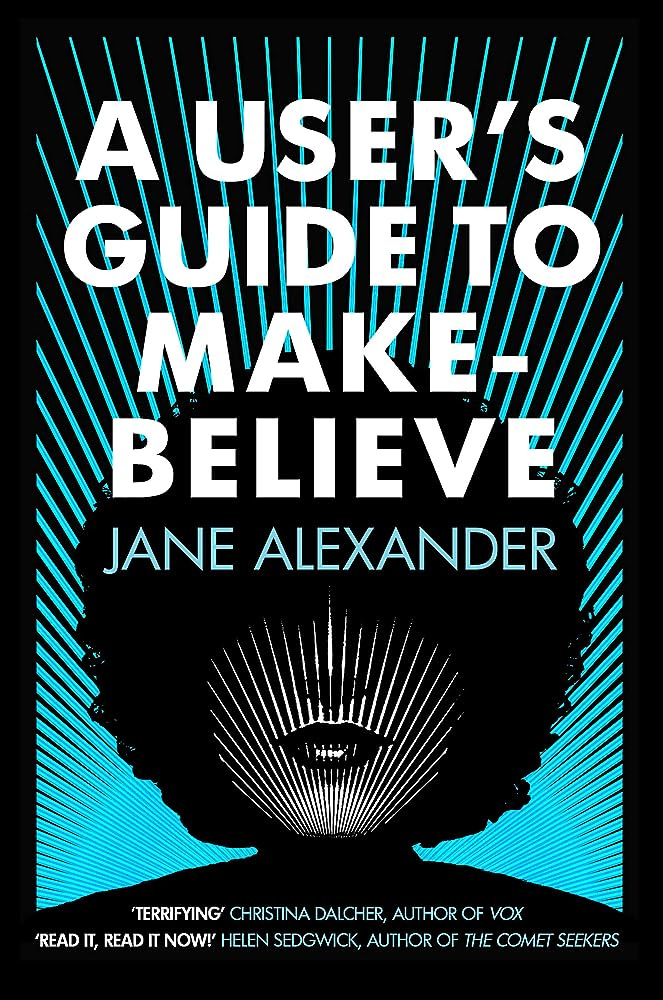Review: A User’s Guide to Make-Believe by Jane Alexander
Originally published in Shoreline of Infinity 2020
We are perhaps in a golden age of speculative fiction. The genre—a subset of SF and therefore much sneered at in the past—is now mainstream, with Nobel Laureate Kazuo Ishiguro and future Nobel Laureates-in-waiting Margaret Atwood and David Mitchell all embracing it wholeheartedly. Scotland, never one to shirk its place in the global scheme of things, is no different, with Helen Sedgwick, Vicki Jarret and now Jane Alexander all making impressive forays into previously niche—and geek—territories. It certainly says something about the interesting times in which we live that speculative—and dystopian—futures are where our artists turn. In the 80s, satire was the kaleidoscope through which we tried to reshape our world. As we roar into the 2020s, there is little to laugh at but much food for thought. In A User’s Guide to Make-Believe, Jane Alexander serves up a feast.
Let’s get this out of the way up top, because it’s obviously the shorthand for which every critic, reviewer and casual reader will reach: Yes, this is perfect for fans of Black Mirror and if Charlie Brooker ever runs out of ideas he could do a lot worse than adapting it for Netflix. There, I said it. But to reduce a book of this complexity and depth to a mere Black Mirror comparison would be to do it and its author a huge injustice.
Make-Believe is a virtual world shaped and only limited by the user’s imagination. It’s run by Imagen and if you haven’t already guessed that they are a shadowy, conspiracy-filled faceless corporation then you just haven’t been paying attention. Cassie is a former employee fired after developing an addiction to Make-Believe that caused her to spend less and less time in the real world and which precipitated a dramatic estrangement from her family. After signing the mother of all restraining orders she is banned from ever using Make-Believe and is forced to make ends meet as the leader of bespoke essay writers selling their wares to students who prefer the extra- to the curricular. As the book opens, Cassie has hit bottom and is starting to claw her way back to something like normality.
It’s a classic David and Goliath battle, with our flawed but sympathetic heroine pitted against the monstrous behemoth of near-future capitalism and, like all the best stories in this genre, it is inseparable from its speculative elements. Without Alexander’s imaginative leap into the future this story simply could not exist. At the same time, the tech isn’t the point. Like Alexander’s first novel, The Last Treasure Hunt (Saraband, 2015), it’s a timeless tale of love that tears us apart. Tech changes; people stay the same.
Written in taut, direct yet poetic prose, A User’s Guide to Make Believe is a conspiracy thriller with heart and brains. Told in short, fast-paced chapters it is a proper page-turner with all the twists, turns and shocking revelations you could reasonably demand. It’s been five years since Alexander’s debut but it’s clear from this novel that the elapsed time hasn’t been wasted. We are cursed to live in interesting times but at least interesting writers are thinking interesting thoughts and writing interesting books about them. Silver linings and all that.




